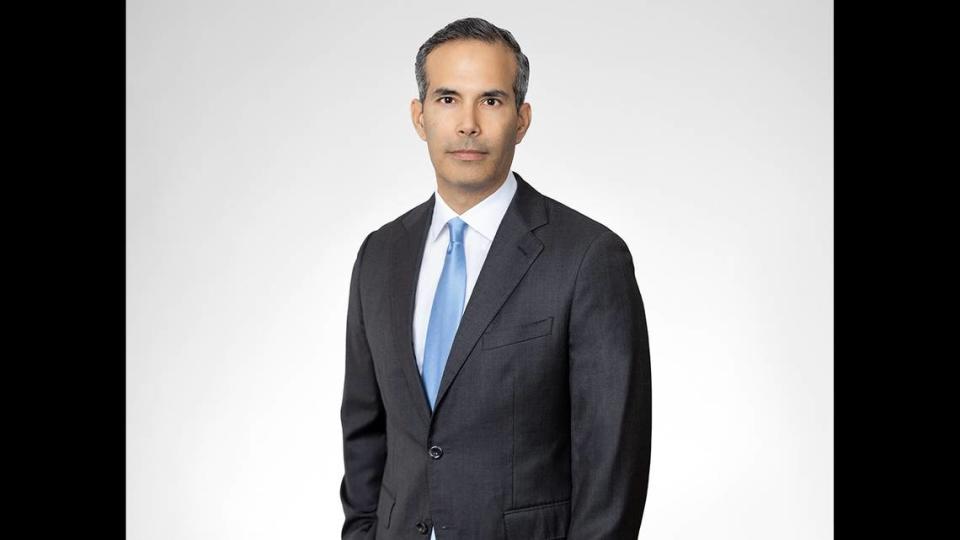States get much better results managing land than the feds — and Texas leads the way | Opinion
State land management can Strengthen Public Services
At its best, government-owned land can help us achieve important goals, such as protecting wildlife refuges and funding public priorities. About 39 percent of the total land in the United States is owned by government entities, including 28 percent by the federal government.
In many Western states, the share of government ownership is much higher, and it’s a major source of controversy. For example, only 14 percent of the land in Nevada is in private hands; the federal government owns 84 percent, severely constraining Nevadans’ self-determination.
One solution may be to devolve control of public lands to the states. Texas’ success in managing public lands could serve as a national model.
Through prudent management of lands with minimal oversight, Texas has consistently generated larger revenues from smaller acreage, when compared to other states and federal lands, all while utilizing fewer personnel. The federal government continues to underperform in terms of revenue, due to overregulation and relying on a much larger workforce.
In the earliest days of our republic, the 1785 Northwest Ordinance provided land to new states to generate revenue in lieu of federal funding. The abundance of federal land granted to the states would give states a source of revenue with which to fund education at all levels, a necessary service to develop the nation.
These lands continue to provide funding for education today, and state land revenues support other public services, including higher education, penitentiaries, and health care facilities. These types of spending serve the public good and are commensurate with the expected use of these lands.
These lands given to the states are state trust lands, which typically are managed by a state’s land board or a group of trustees nominated by the state. The land itself, along with the natural resources and products produced from them, are valuable state assets. States rich in natural resources, particularly in energy, derive more revenue from these lands, assuming their land boards manage leasing and production assets prudently.
Texas state lands fund schools, universities
The Texas General Land Office manages more than 13 million acres and generated more than $1.8 billion during the 2021 fiscal year, with the majority of earnings coming from oil and gas production.
School trust funds are the major beneficiaries of these revenues. The royalty revenues collected from mineral or surface right production are regularly invested long-term, usually referred to as “permanent funds.” This investment allows Texas to continue its support for public education through careful fund management, similar to that of an endowment, in which the generated interest goes to K-12 or postsecondary education while the principal remains stable.
For instance, the endowment for postsecondary education institutions — which is supported by the Permanent University Fund—had grown to $30.9 billion in 2018 to benefit the University of Texas and Texas A&M University systems. The Legislature also weighs in on how much to distribute to the Available School Fund, which is funded by permanent school funds, taxes, and contributions by the land office, to supplement education spending.
Texas has been careful with this endowment, allowing it to grow into a crucial permanent school fund, valued at $45 billion in fiscal year 2020. For context, this constitutes 50 percent of the total value of permanent trust funds across all states with trust lands.
What makes the Texas model especially appealing is that its permanent school fund, which supports debt financing for public and charter schools, lowers interest rates. This reduces operating costs and sets the standard for how other states with trust lands can manage and grow their permanent funds.
The dominant position of the U.S. Interior Department
State land trusts manage about 156 million surface acres and 177 million mineral acres. Meanwhile, the federal government’s various bureaus and services under the Interior Department manages about 640 million acres — nearly 14 times the amount of land under state management and roughly one quarter the land mass of the United States — through various offices and bureaus like the Forest Service, Bureau of Land Management, or BLM, Park Service, and Fish & Wildlife Service. The BLM owns and manages 10 percent of U.S. surface land and one-third of subsurface mineral resources, making it the greatest federal resource and landholder.
In 2021, the BLM generated $451 million from various uses of the 245 million acres of its managed lands. In comparison, Texas managed only 13 million acres — roughly 5% of BLM’s land mass — but generated more than $1.8 billion in revenue, nearly four times the revenue the BLM realized. States that follow the Texas model, it is clear, can outperform the federal land management model.
Federal government constrains land development
The full extent of the Texas advantage extends to the efficiency of its much smaller workforce. The BLM collected its revenue with 10,000 employees and more than 27,000 volunteers. The Texas land office, by contrast, employs only 56 full-time employees who perform a wider array of tasks.
Land office employees manage the energy sector, conduct mineral reviews, audit finances, serve as landmen and geologists, and generate more revenue. As a result of this prudent stewardship, Texas can increase its level of support for funding public services.
In 2023, royalties generated from oil and gas amounted to $2.75 million. This provided the budgets for those full-time employees and for energy marketing. Oil and gas producers operating on leased lands pay these royalties to the land office, amounting to 20%–25% percent of goods produced.
The Texas model demonstrates how states can continue to fund budgets through efficient trust land management. The shifting priorities of the Interior Department, on the other hand, strain the federal government’s ability to most effectively use lands, as partisan politics has dissuaded energy development.
Interior leadership has tremendous unilateral authority to reduce or even eliminate resource development on federal lands. In April 2022, Interior Secretary Deb Haaland announced that the BLM assessed lands potentially available and eligible for leasing in Alabama, Colorado, Montana, Nevada, New Mexico, North Dakota, Oklahoma, Utah and Wyoming. It analyzed 646 parcels on roughly 733,000 acres that had been previously nominated for leasing by energy companies.
After an exhaustive study recommending ratcheting down development in favor of environmental protection, the final sale notice covered 80% of the original amount of land. This reduced the amount of potential revenue these states could generate due to the minimized energy extraction achievable. Although these states are not as energy rich as Texas, there is still considerable revenue to be made from their energy sectors.
What accounts for Texas’ success, outside of its relentless dedication to fiduciary responsibility, is the variety of ways it uses its lands. Although Texas primarily generates revenue from hydrocarbons, it generates the rest of its revenue from agriculture, other resource extraction, land-leasing, and the sale of renewable resources, including hydro, solar and wind. States and trust lands without hydrocarbon revenue can explore such land uses to provide revenue for education and other public priorities.
Western states such as Colorado, Utah, Wyoming, Montana, Washington and Oregon have diversified their sources of economic output to generate revenue from their trust lands. They generated more than $1.6 billion in cumulative revenue from all sources in 2018.
Through careful management of trust lands, states can continue to protect these lands through conservation while providing income to support residents of those states. Greater responsibility of trust lands provides states with greater autonomy over where and how they manage public resources that the federal government has proved unable to do.
George P. Bush served two terms as Texas land commissioner. David Winter is a graduate student at the Bush School of Government and Public Service at Texas A&M University. This piece was originally published by the Foundation for Research on Equal Opportunity , a nonprofit think tank based in Austin.



 Yahoo Movies
Yahoo Movies 
